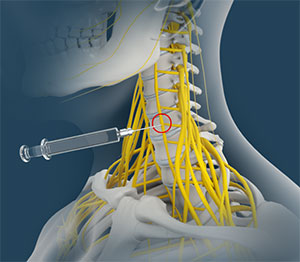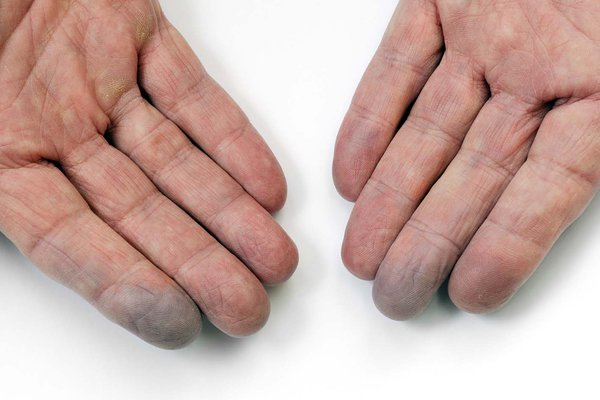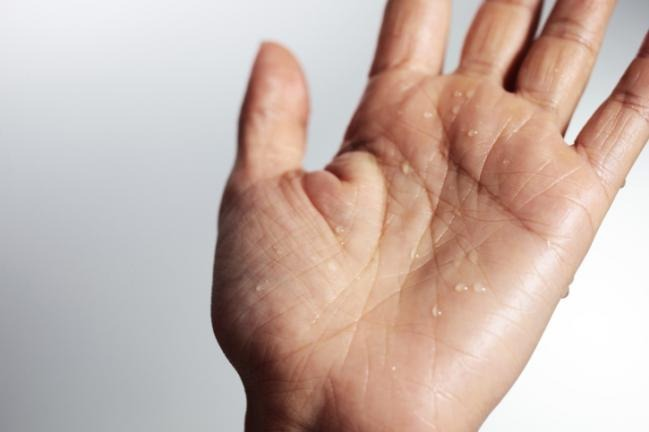Mitigate Pain Clinic – Dr Jeshnu Tople – Pain Management Specialist In Nagpur
Stellate Ganglion Block
Stellate Ganglion Block
A Breakthrough Pain Relief Treatment
What Is a Stellate Ganglion Block (SGB)?

How Does the Stellate Ganglion Block Work?
The nerves in the stellate ganglion are responsible to carry signals for pain, anxiety and other symptoms. Stellate Ganglion Block (SGB) acts like a roadblock, stopping these signals from reaching the brain. This can result in:
- Pain relief
- Reduced inflammation
- Better blood circulation
Conditions Treated with Stellate Ganglion Block
1. Complex Regional Pain Syndrome (CRPS)
CRPS is a debilitating nerve disorder that causes severe pain, swelling and temperature changes in the arms or legs. SGB can calm the overactive nerves, reducing pain and restoring normal limb function.
2. Raynaud’s Disease
Raynaud’s disease causes numbness, coldness and discoloration in the fingers and toes due to poor circulation. SGB relaxes the blood vessels, improving blood flow and reducing symptoms of arms.
3. Peripheral Artery Disease (PAD)
PAD occurs when narrowed arteries reduce blood flow to the arms and legs, leading to pain, cramping, and ulcers. SGB can help improve circulation and reduce discomfort in patients with PAD of arms.
4. Chronic Ventricular Arrhythmia
Some cases of life-threatening heart rhythm disorders may be linked to an overactive nervous system. SGB has been used to help regulate the heart’s electrical activity, reducing dangerous arrhythmias.
5. Hyperhidrosis (Excessive Sweating)
If you struggle with uncontrollable sweating, SGB can help regulate nerve activity and reduce excessive sweating, especially in the face, hands and upper body.
6. Head and Neck Pain (Migraines & Neuropathy)
Chronic migraines, tension headaches, cancer pain and nerve pain in the head and neck can be debilitating. By blocking the pain signals in the stellate ganglion, SGB can provide long-lasting relief.






What to Expect During the Stellate Ganglion Block Procedure
If you’re considering SGB, you might be wondering what the procedure involves. Here’s a step-by-step breakdown of what to expect:
Step 1: Preparation
✔️ You will lie on your back with your neck slightly extended.
✔️ The doctor will clean the area and use a local anesthetic to numb the skin.
✔️ Fluoroscopy (X-ray) or ultrasound imaging will be used to ensure precise needle placement.
Step 2: Injection of the Anesthetic
✔️ A thin needle will be inserted near the stellate ganglion in the lower neck.
✔️ A small amount of anesthetic is injected to temporarily block nerve signals.
✔️ You may feel a warm sensation or temporary numbness in your face or arm.
Step 3: Observation & Recovery
✔️ You will be monitored for about 30-60 minutes after the injection.
✔️ Most people can go home the same day but should avoid strenuous activities for 24 hours.

Potential Benefits and Risks of Stellate Ganglion Block
Benefits of SGB:
✅ Rapid pain relief (sometimes within minutes)
✅ Non-surgical and minimally invasive
✅ Better circulation and reduced inflammation
✅ Can reduce or eliminate the need for pain medications
Possible Risks & Side Effects:
⚠️ Temporary hoarseness or voice changes
⚠️ Drooping eyelid or red eye on the side of the injection
⚠️ Mild soreness at the injection site
⚠️ Dizziness or lightheadedness (resolves quickly)
Most side effects disappear within a few hours, and complications are rare when performed by experienced pain specialists like those at Mitigate Pain Clinic.